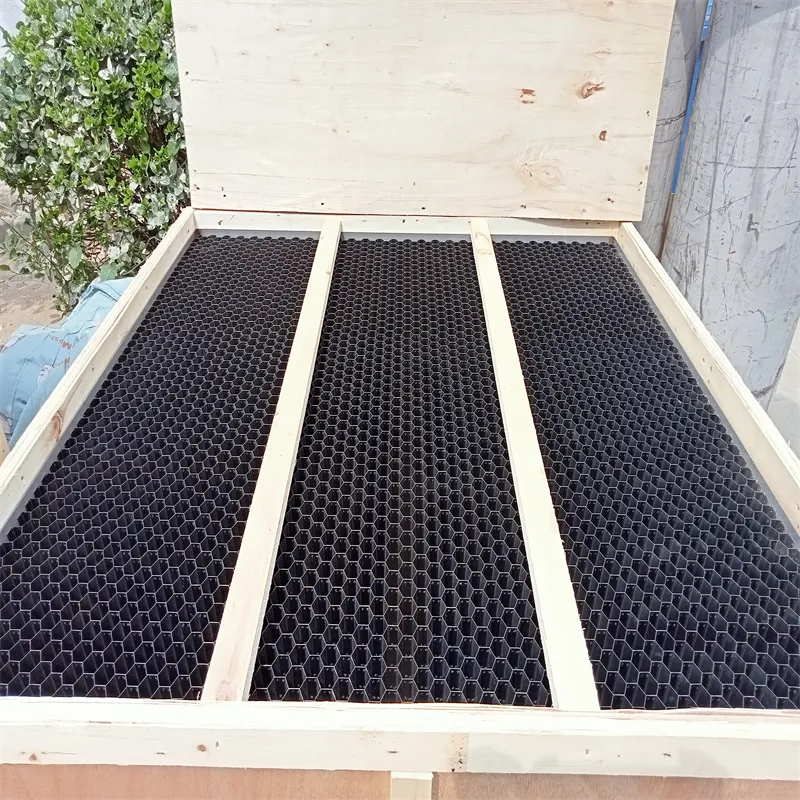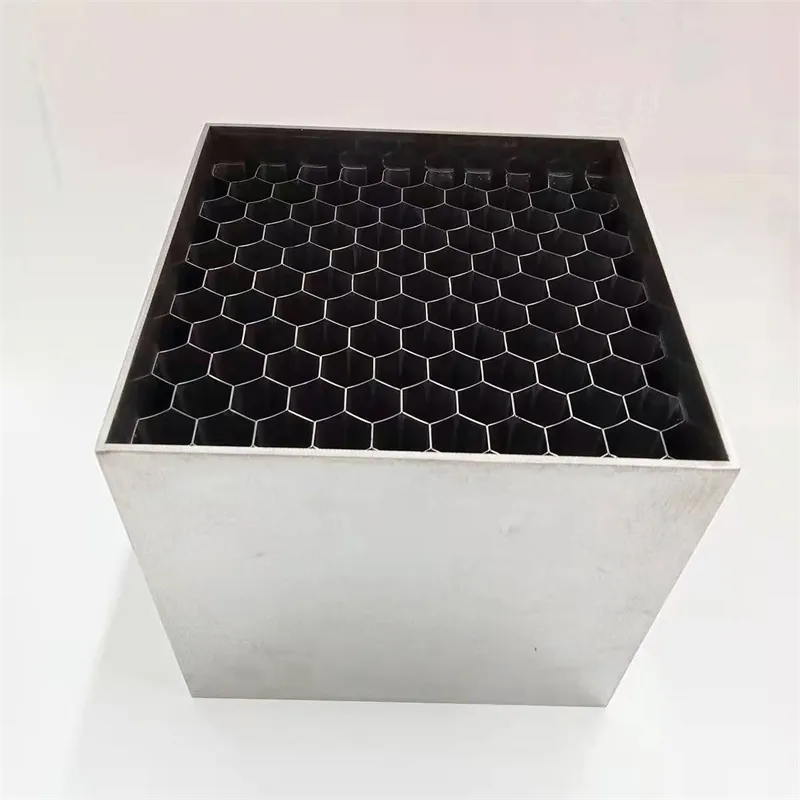
- Afrikaans
- Albanian
- Amharic
- Arabic
- Armenian
- Azerbaijani
- Basque
- Belarusian
- Bengali
- Bosnian
- Bulgarian
- Catalan
- Cebuano
- China
- China (Taiwan)
- Corsican
- Croatian
- Czech
- Danish
- Dutch
- English
- Esperanto
- Estonian
- Finnish
- French
- Frisian
- Galician
- Georgian
- German
- Greek
- Gujarati
- Haitian Creole
- hausa
- hawaiian
- Hebrew
- Hindi
- Miao
- Indonesian
- Italian
- Japanese
- Javanese
- Malay
- Persian
- Portuguese
- Punjabi
- Russian
- Spanish
- Swahili
- Telugu
- Vietnamese

Jan . 09, 2025 12:01
Back to list
perforated honeycomb core
Perforated honeycomb cores have emerged as a revolutionary component in various industries, known for their impressive structural and functional properties. These unique materials offer a combination of lightweight characteristics and exceptional strength, positioning them as an ideal choice for applications that demand high performance and cost efficiency.
In the automotive sector, the benefits of perforated honeycomb cores are driving innovations that align with the future of transportation. Lightweight, yet robust, components contribute to the development of electric vehicles, which require optimized efficiency to extend battery life. As the demand for sustainable and efficient vehicles increases, automotive engineers turn to these cores to reduce vehicular mass, thereby improving fuel efficiency and emission standards. Their versatility extends to other sectors as well, such as railways, marine, and civil construction, where they are deployed in interiors, bulkheads, and reinforcements. The adaptability of perforated honeycomb cores to be shaped and cut to exact specifications allows them to meet diverse application requirements, challenging traditional construction and design paradigms. However, to capitalize on the benefits of perforated honeycomb cores, selecting a supplier with credible expertise and a proven track record is crucial. Working with authorities in material production ensures that the cores adhere to quality standards and manufacturing precision. Evaluation of supplier credibility involves scrutinizing their technological capabilities, sustainability practices, and commitment to innovation to ensure they provide materials that meet rigorous operational demands. Perforated honeycomb cores embody the future of lightweight, strong, and sustainable material solutions. Their widespread adoption across industries is a testament to their unmatched performance and potential for innovation. As industries evolve, embracing these cores will help companies stay at the forefront of technological advancements, reaffirming their commitment to efficiency, sustainability, and superior product design.


In the automotive sector, the benefits of perforated honeycomb cores are driving innovations that align with the future of transportation. Lightweight, yet robust, components contribute to the development of electric vehicles, which require optimized efficiency to extend battery life. As the demand for sustainable and efficient vehicles increases, automotive engineers turn to these cores to reduce vehicular mass, thereby improving fuel efficiency and emission standards. Their versatility extends to other sectors as well, such as railways, marine, and civil construction, where they are deployed in interiors, bulkheads, and reinforcements. The adaptability of perforated honeycomb cores to be shaped and cut to exact specifications allows them to meet diverse application requirements, challenging traditional construction and design paradigms. However, to capitalize on the benefits of perforated honeycomb cores, selecting a supplier with credible expertise and a proven track record is crucial. Working with authorities in material production ensures that the cores adhere to quality standards and manufacturing precision. Evaluation of supplier credibility involves scrutinizing their technological capabilities, sustainability practices, and commitment to innovation to ensure they provide materials that meet rigorous operational demands. Perforated honeycomb cores embody the future of lightweight, strong, and sustainable material solutions. Their widespread adoption across industries is a testament to their unmatched performance and potential for innovation. As industries evolve, embracing these cores will help companies stay at the forefront of technological advancements, reaffirming their commitment to efficiency, sustainability, and superior product design.
Prev:
Next:
Products categories
Latest news
-
Why Vented Aluminum Honeycomb Is Leading the Way in Shielding and Ventilation SolutionsNewsJul.18,2025
-
Why Stainless Steel Honeycomb Panel is the Ultimate Choice for High-Tech Shielding and ProtectionNewsJul.18,2025
-
Why Honeycomb Strips Are Revolutionizing High-Speed Sealing SolutionsNewsJul.18,2025
-
Shielded Glass Innovation Powers the Future of Electromagnetic ProtectionNewsJul.18,2025
-
Precision Starts Here: Revolutionizing Airflow Control with Honeycomb Wind Tunnel SolutionsNewsJul.18,2025
-
Elevate Industrial Performance with Precision-Engineered Steel Honeycomb Core SolutionsNewsJul.18,2025
-
Vented Aluminum Honeycomb: A Smart Shield for Airflow and EMI ControlNewsJul.11,2025















